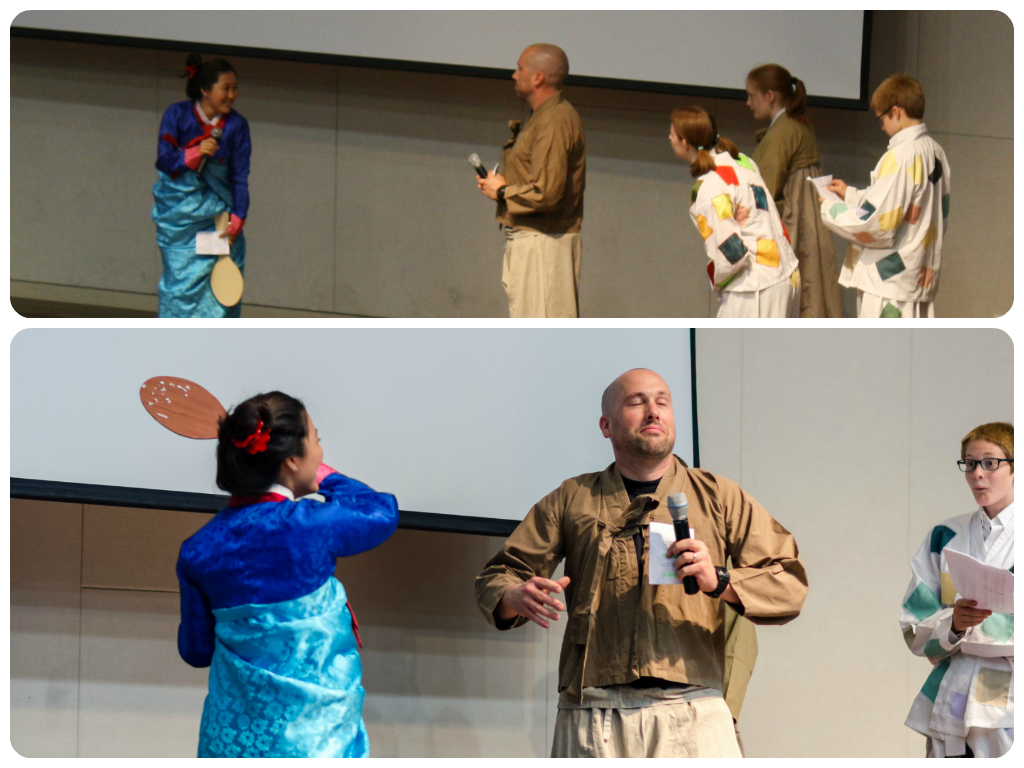The last week of May was "Spirit Week" at David and Elisabeth's school (a 12-grade, mostly-English-speaking, Christian school that's happily located below our apartment balcony), and instead of having "pajama day" or "wear your clothes backwards day" like I remember from homecoming weeks of my youth, these folks do it up right. For example, Tuesday was Korea Day: many kids wore gorgeous traditional clothing and a school-wide lecture was given about Korea.
After the lecture, the school's international faculty (from the US, Canada, China, and New Guinea) enacted a traditional Korean folk story; David and Elisabeth were also required to participate by their Korean teacher (let's just say that Elisabeth was less unhappy than David about this). I suspect the single rehearsal, held the previous afternoon, contributed to the near-slapstick acting style. In addition, none of the actors is a native Korean speaker, so the audience (who knew the story well) had a GREAT time laughing at the delightful old tale told in truly terrible Korean. I enjoyed the audience nearly as much as the play.
So here's the story, as I picked up from the skit, the powerpoint slides, and my faithful assistant, Wikipedia (note: several of these pictures were taken by Aleksey Yoo (David's Russian teacher and a member of our church).
A wise old father divides his estate between his two adult sons, realizing that the evil/crafty Nolbu would otherwise leave nothing for kind Heungbu. However, after the father's (over-the-top, butt-in-the-air) death, the greedy Nolbu steals his brother's inheritance, leaving his family destitute (thus the plain-spun hanbok rather than the bright silky clothing).
 |
| The father wisely divides his estate between his sons, dies, and one brother still gets screwed by the other. |
 |
| I love David's look of surprise when Nolbu's wife whacks Heungbu. |
 |
| This Canadian was a highly demonstrative swallow. Penguin. Whatever. |
 |
| The Gourd of Abundance. |
 |
| Nolbu breaks the swallows leg, hoping to be awarded a gourd of riches but gets a club-wielding goblin instead. |
The brothers (inexplicably) reconcile and apparently live happily ever after, giggling their way off the stage.
 |
| The cast returns to take a bow. |
P.S. It ends up that the school's version of this tale was fairly tame. For some alternatives, see these sites:


Wish I could have been there!
ReplyDeleteThe National Folk Museum had an entire children area dedicated to this story. Even though they had a bigger gourd, I bet this version was better.
ReplyDelete